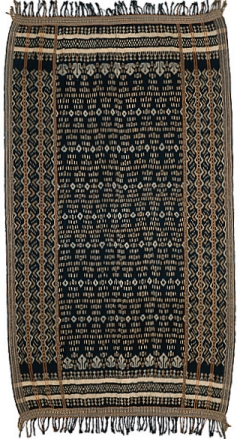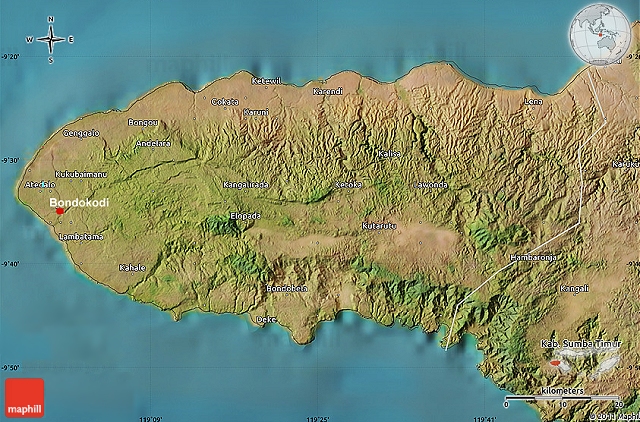West Sumba - remote, unloved KodiKodi, the region around the village of Bondo Kodi, is the westernmost tip of Sumba. Little is known about its textiles, as they are rarely covered in literature. Gittinger, in Splendid Symbols grants the area two images with caption, no further text. Even a dedicated work like Decorative Art of Sumba 'does' Kodi in one short paragraph and one picture. Collectors and curators have likewise largely ignored Kodi. If you do want a Kodi piece it can take years before you find a decent one, as dealers tend to closely follow the interests of their patrons. As a result, many collections with otherwise fairly complete geographic coverage do not have a single Kodi. One may wonder what has caused this lack of interest. It may partly be due to inaccessibility. The Kodi region is as far as one can get from the main Sumban port of Waingapu. Another reason is that many Kodi cloths are buried with their owners. A complementary reason, no doubt, is their lack of creative exuberance. As one collector said: "If you have seen one Kodi, you've seen them all." While this may be largely true, in our eyes Kodi blankets have a unique beauty exactly because of their visual austerity, a blend of restrained power and serenity. The pattern that is forever young
As Kodi hanggi are rarely used as attire (other than by older men of high rank), but are mostly intended to serve as shrouds, this symbolic charge is a vital aspect. Because the hanggi are intended as an extra skin to protect deceased noblemen on their return journey to this world in their next life, a certain toughness, again a quality seen in python skin, is appreciated. The hanggi are often made therefore of fairly thick handspun, appreciably coarser than that in the East Sumbanese hinggi. The latter may also serve as shrouds, but this is not their primary function. The desire for a sturdy feel leads the Kodinese to prefer the yarn to be spun by young, inexperienced women, supposedly unable to spin thin yarn. Another common Kodi motif is the mamuli, the omega shaped earring often used as male bridewealth that represents the female sexual organ, and serves as a mark of distinction to Sumban nobility. The characteristic colouration of Kodi ikat hanggi [sic], limited to indigo on white, with the possible addition of yellow or ochre accents, is strikingly different from the hinggi of East Sumba, whose dominant colour, certainly in textiles for the nobility, is some shade of red. The yellow(ish) accents - which perfect the mimicry of python skin - may be ikated, but are usually dabbed in after the weaving, using bits of cotton dipped in dye made from an indigenous tree called pakata. Some Kodi blankets are further decorated with longitudinal stripes in floating warp that also imitate snakeskin. Notable is the almost total lack of evolution of the Kodi style over time: hanggi from the 1970s look practically the same as those from a century earlier, except that the older cloths tend to be a little more intricate - a trend we see in nearly all of Southeast Asia. Adoption by neighboursMost ikat in Indonesia is made for use by the producing community, but Kodi hanggi have also been adopted by neighbouring regions, albeit for other uses. This 'export' of Kodi cloths almost certainly roots in the endemic hunger that plagues the hot and dry coastal zone, where the short growing season rarely produces enough food to last a whole year. To make up for the shortage, the Kodinese engage in an institutionalized barter with the Lagoya and Ede peoples in the fertile hill country around them. At the mandara, held towards the end of the dry season, the Kodinese swap their highly valued ikat textiles for maize and other agricultural products with the hill tribes, who use the hanggi as ceremonial attire for their priests. As a result, few Kodinese men, even the more well-to-do, get to realize the ultimate Kodi dream: to have two identical hanggi, one to use as hipcloth, the other as shouldercloth. |




